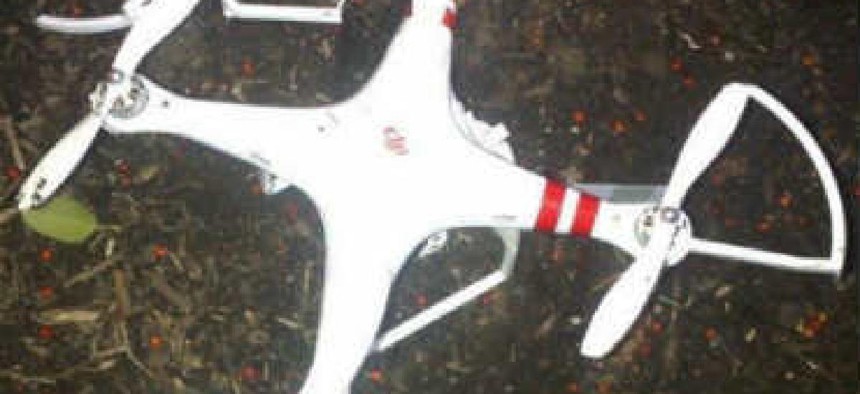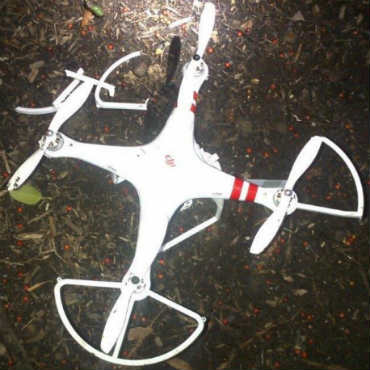White House drone breach raises questions of tech priorities

The Secret Service has long explored technology to combat the threat of commercial drones, but the Jan. 26 crash of a quadcopter on White House grounds could spur interest in deploying it.

The quadcopter above crashed onto White House grounds Jan. 26.
The recent crash of a quadcopter drone on White House grounds came as no surprise to former Secret Service officers, who say the agency has considered the scenario for years. The larger IT question for the Secret Service, and numerous other federal agencies, is determining the amount of resources to expend combating the stealthy and widely used miniature UAVs.
The public spotlight from the White House crash could be an added impetus to address that challenge, according to the former security officials.
The widespread use of commercial drones and the logistical challenges of countering them in an urban setting seem to have made a drone hovering near 1600 Pennsylvania Ave. a matter of not if, but when. Variations on the type of drone that struck a tree on the White House South Lawn on Jan. 26 can fit in the palm of your hand and be bought on Amazon for less than $60.
"The technology and the capabilities are compounding year after year," said Jonathan Wackrow, who retired from the Secret Service in August. "Two years ago no one had quadcopters. Now my son has one."
The Secret Service has been exploring drone mitigation technology for at least five years, according to Wackrow. That work has primarily gone through the service’s Technical Security Division, which is in charge of tech development, and has been assisted by the Department of Homeland Security, the service’s parent agency. The Secret Service's aircraft security program, most of which is classified, is "one of the most robust programs in government" in terms of funding and capabilities, according to Wackrow, who now heads i4 Strategies, a New York-based consulting firm.
Merkel incident a catalyst
The Secret Service's interest in the security threat posed by commercial drones was magnified by an incident across the Atlantic.
In September 2013, a small quadcopter hovered within feet of German Chancellor Angela Merkel as she spoke at a campaign rally. No one was hurt, but the incident caught the close attention of the Secret Service, which keeps a running tally of commercial drone incidents.
The Merkel episode brought the potential threat from small drones into sharp focus for the Secret Service, according to Wackrow. "That kind of incident really raises the hair on the back of your neck: 'Hey, could this happen here?'" he said.
Within about a month, then-Secret Service Director Julia Pierson convened a meeting with senior DHS officials that focused in part on how to prevent that scenario from happening to President Barack Obama, according to Chris Cummiskey, a former DHS official who attended the meeting.
Attendees studied footage of the Merkel incident while Secret Service officials made a case for putting more money toward counter-measures for detecting and disabling small drones in DHS's next budget request, said Cummiskey, who was then the department’s acting undersecretary for management.
While the Merkel episode may have produced more in terms of general attention to the threat than resources to defend against it, Cummiskey said the recent White House drone crash could be more consequential, meaning "an impetus for swifter funding" for technological counter-measures.
But any Secret Service effort to deploy drone-detecting sensors, for example, would be up against a common procurement challenge: a lag time between a threat emerging and a technology deployed to meet it. The Secret Service might get the funding they want in one budget request, but by the next budgeting cycle "we're probably behind the curve" in technology, said Wackrow.
Aviation contractors are hoping to tap the federal demand to help secure agency airspace.
Fred Roggero, a retired Air Force major general who is now an aviation consultant, says federal officials are waking up to the possibility of dealing with ever-smaller drones with more sophisticated technology.
He said his consulting firm, Resilient Solutions, is helping a European defense contractor, which he declined to name, hawk sensors designed to detect tiny drones to federal agencies. Roggero said he also plans to pitch the product to U.S. defense and intelligence agencies.


